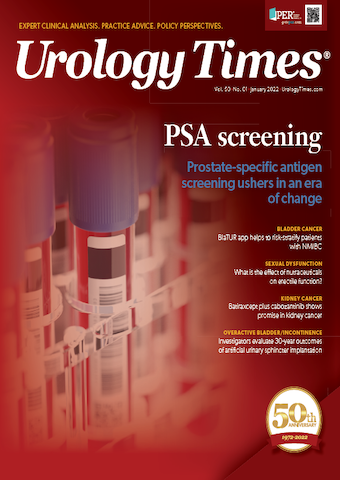Publication
Article
Urology Times Journal
Urology Times Money Matters: What is your student loan repayment strategy?
Author(s):
Loan repayment assistance programs and refinancing are options.
Jeff Witz, CFP

With student loan payments set to resume on February 1, 2022, what are some things I should be considering?
The period of administrative forbearance on federal student loans is set to expire January 31, 2022, and payments will resume on February 1.Student loan relief was a major component of the CARES Act passed by Congress and signed into law by President Donald Trump in March 2020. The provisions in the CARES Act suspended payments on student loans, dropped the interest rate to 0%, and suspended collections on student loans in default. After multiple extensions by President Trump and President Biden, this relief for federal student loan borrowers is set to end. Physicians who took advantage of this relief will once again be expected to make payments on their loans.
Statistics show that today’s physicians leave their programs having accumulated an average debt of approximately $241,600.1 At this significant debt level, many physicians look for strategies to reduce their interest accumulation and/or reduce their monthly payments so they can direct more resources toward other goals such as saving for a home, retirement, and their children’s college educations. The nearly 2 years of loan forbearance certainly assisted with this, but with that program coming to an end, now is a good opportunity to review the other options available.
Are you practicing medicine at a for-profit or nonprofit organization? Public Service Loan Forgiveness is a hot-button issue, but as long as it remains a viable option, it is one worth considering for physicians with substantial student loan debt. Many physicians complete their residencies and fellowships at nonprofit hospitals. If you were paying toward your loans during that time, you may already be 5 to 7 years into the 10-year (120 eligible payments) loan forgiveness process. The months of 0 payments under the soon-to-end forbearance program also count toward the 120 total eligible payments, so you may be even closer to forgiveness eligibility.
Are there loan repayment assistance programs available to you? The National Institutes of Health repays up to $50,000 per year of student loans if you agree to conduct medical research in needed fields. The National Health Service Corps (NHSC) offers tax-free loan repayment assistance of up to $50,000 for a 2-year commitment to qualified health care providers who choose to take their skills to geographic areas with inadequate medical care. In 2022, NHSC plans to make approximately3500 new awards to health professionals serving in rural and underserved communities. Additionally, most individual states have loan repayment assistance programs for physicians who practice in their state facilities.
Is refinancing a viable option? If you practice medicine at a for-profit company, such as a private practice or private equity group, refinancing is worth exploring. Refinancing can dramatically reduce your interest rate and monthly payments, especially with interest rates continuing to hover near historical lows. The lower interest rate may result in your paying less over the lifetime of the loan. However, rates are often determined by a combination of credit score and income.
Why is refinancing, reducing your interest rate, and reducing your monthly payment typically desirable? Aside from the fact that the lower the interest rate, the lower the interest accumulation over the lifetime of the loan, lower monthly payments also provide some cash flow flexibility. You can still choose to pay higher amounts to try and pay the loan off sooner, or you can take the money saved and put it toward another financial goal.
The general rule of thumb on whether you should devote additional resources toward paying down your debt vs saving and investing is, if you believe you can earn a higher rate of return by investing than the interest rate being charged on the loan, saving and investing that money is theoretically the smarter financial move. However, investment returns are rarely guaranteed whereas interest rates typically are. A borrower’s risk tolerance should factor into this decision.
Finally, the personal well-being of the borrower also needs to be considered. If loans are causing you significant anxiety or other health or lifestyle problems, your well-being should take precedence and you should consider paying extra toward the loans.
Everyone’s situation is unique, and many factors influence which student loan repayment strategy is most beneficial. Consult your financial professional to determine which option fits your needs best.
Reference
1. Average medical school debt. Education Data Initiative. Updated July 10, 2021. Accessed November 15, 2021. https://educationdata.org/average-medical-school-debt
The information in this column is designed to be authoritative. The publisher is not engaged in rendering legal, investment, or tax advice. If you would like assistance with your individual investment strategy, please email witz@ mediqus.com.

































